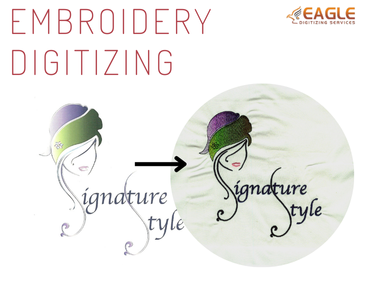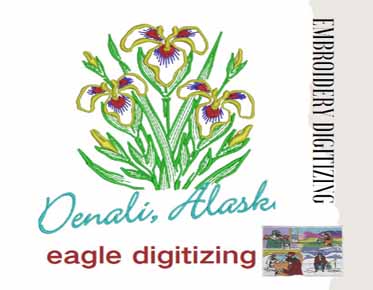How Nature Drives Influences on Vector Art
In an era where digital art thrives, the environment plays a pivotal role in shaping artistic expression, particularly in the realm of vector art. The interdependence between nature and creativity often ignites innovation and inspires artists to create work that resonates with the ecological consciousness of today. Understanding how our surroundings impact digital artistry is not just an aesthetic endeavor; it’s a reflection of the world we inhabit. For the excellent online vector conversion, have no qualms about getting in touch with us.
The Digital Landscape: How Technology Shapes Vector Art
From Pen and Paper to Pixels: The Shift to Digital Design
The transition from traditional methods to digital design has revolutionized the creative landscape. Artists who once relied solely on pen and paper now wield powerful software that allows them to manipulate images with unprecedented freedom. This shift has democratized art, enabling anyone with access to technology to create stunning visuals. Yet, it also poses questions about authenticity and the organic nature of artistic expression in a world dominated by pixels.
The Role of Software in Defining the Look and Feel of Vector Art
Software tools, such as Adobe Illustrator and CorelDRAW, are the lifeblood of vector art creation. They offer a plethora of features that define the aesthetic of digital illustrations, from sophisticated shape manipulation to an extensive color palette. Each program’s unique capabilities can profoundly influence an artist's style and approach, leading to a diverse array of artistic interpretations. The choice of software becomes an extension of the artist’s identity, guiding them in their creative endeavors.
How Hardware Limitations Impact Artistic Choices
While software innovations drive artistic potential, hardware limitations can constrain creativity. The processing power of a computer or tablet can affect the complexity of designs an artist can comfortably work on. Artists must navigate these constraints, often compromising on intricate details to ensure smooth functionality. This interplay between hardware capabilities and artistic expression reveals the underlying relationship between technology and the environment in which it operates.
The Influence of Nature on Vector Art Themes
Bringing the Outdoors to Digital Art: Nature-Inspired Vector Designs
Nature serves as an inexhaustible source of inspiration for vector artists. From lush landscapes to intricate floral patterns, the organic forms found in the wild inform digital creations. Artists often draw upon these elements to evoke emotions or convey messages, creating pieces that resonate with audiences on a visceral level. This symbiosis between the natural world and digital artistry invites viewers to appreciate the beauty of both realms.
How Climate and Natural Surroundings Impact Color Choices
The climate of a region significantly influences the color palette employed in vector art. Artists from sunny locales may gravitate toward vibrant yellows and blues, while those in cooler climates might favor muted tones of green and gray. This relationship between environment and color selection underscores how deeply intertwined our surroundings are with creative expression, shaping not just what is depicted but how it is perceived.
Organic Shapes: Using Nature’s Forms in Geometric Vector Art
The marriage of organic and geometric shapes creates a captivating visual dialogue within vector art. Artists often abstract natural forms, transforming them into geometric patterns that maintain an essence of the original subject. This fusion not only celebrates the beauty of nature but also demonstrates how technology can reinterpret and reimagine the world around us.
Environmental Trends and Their Impact on Vector Art
How Sustainability Influences Design Choices
As the call for sustainability becomes increasingly urgent, designers are adapting their practices to reflect environmentally conscious values. This shift manifests in vector art through the use of eco-friendly color palettes, materials, and themes that promote sustainability. Artists are increasingly tasked with not only creating visually appealing work but also fostering a sense of responsibility toward the planet.
Eco-Friendly Messaging in Vector Art
Vector art serves as a powerful medium for conveying eco-friendly messages. Whether through campaigns advocating for environmental protection or illustrating the impacts of climate change, artists harness their skills to raise awareness and inspire action. The clarity and precision of vector graphics make them particularly effective for communicating complex ideas in a visually digestible format.
Designing for Social Change: Vector Art in Environmental Campaigns
Vector art has become a critical tool in social change campaigns, particularly those focused on environmental issues. Artists are leveraging their talents to craft compelling visuals that resonate with diverse audiences, encouraging engagement and activism. This fusion of art and advocacy highlights the transformative power of creativity in addressing pressing global challenges.
Urban Landscapes: Cityscapes in Vector Art
How Modern Architecture Shapes Urban-Themed Vector Designs
The interplay between architecture and vector art reflects the dynamic nature of urban environments. Modern structures inspire artists to explore new forms and compositions, translating the rhythm and energy of city life into their work. Urban-themed vector designs capture the essence of metropolitan living, often juxtaposing sleek lines and vibrant colors to convey a sense of movement and vitality.
Capturing the Vibe of a City Through Minimalist Vector Art
Minimalist vector art provides a lens through which to capture the unique character of a city. By distilling complex cityscapes into their essential forms, artists create designs that resonate with both locals and visitors. This approach often highlights iconic landmarks and urban experiences, inviting viewers to connect with the essence of a place in a simplified yet impactful way.
The Role of Street Art and Graffiti in Vector Creations
Street art and graffiti serve as significant influences in the realm of vector art. The bold colors and dynamic forms found in urban spaces often translate into vector designs that embody the spirit of rebellion and creativity. Artists draw inspiration from the raw, unfiltered expressions of street culture, merging these influences with digital techniques to create captivating visuals that speak to contemporary societal issues.
Color Theory and Environmental Influence
How Natural Light and Weather Affect Color Palettes in Vector Art
Natural light and weather conditions profoundly impact the color choices in vector art. Artists often adapt their palettes based on the time of day or atmospheric conditions, mimicking the hues that nature provides. This responsiveness to environmental changes infuses vector art with a sense of authenticity, grounding digital creations in the reality of the world outside.
Seasonal Color Shifts: Adapting Vector Art to Environmental Changes
Seasons bring a kaleidoscope of colors, and vector artists frequently adapt their work to reflect these shifts. The bright blooms of spring, the warm tones of autumn, and the stark contrasts of winter each inspire unique color palettes that resonate with viewers. By embracing seasonal changes, artists create work that feels timely and relevant, inviting audiences to engage with the cyclical nature of life.
Earth Tones vs. Neon: Environmental Triggers for Color Selection
The choice between earth tones and neon colors in vector art often reflects a deeper commentary on the environment. Earthy hues evoke a sense of grounding and connection to nature, while neon shades may symbolize modernity and technology. Artists navigate this spectrum to convey messages that resonate with the viewer’s emotional and intellectual understanding of their environment.
Vector Art in Environmental Graphics and Signage
The Growing Demand for Vector Art in Environmental Design
As the demand for cohesive and impactful environmental design increases, vector art has emerged as a vital component. Its scalability and clarity make it ideal for various applications, from signage to promotional materials. Designers are recognizing the importance of vector graphics in creating visually compelling and environmentally responsible designs that communicate effectively.
Wayfinding and Signage: How Vector Art Enhances Public Spaces
Wayfinding systems benefit immensely from vector art, which offers clarity and simplicity in navigation. Effective signage enhances the user experience in public spaces, guiding individuals seamlessly through urban environments. The integration of vector graphics in wayfinding not only improves functionality but also adds aesthetic value to the spaces they inhabit.
How Vector Art Contributes to Eco-Friendly Branding
Eco-friendly brands are increasingly turning to vector art to convey their values and mission. The clean lines and vibrant colors of vector graphics allow these companies to create a strong visual identity that resonates with environmentally conscious consumers. By incorporating sustainable practices in their branding efforts, these businesses foster a connection between their products and the planet.
How Environmental Design Trends Influence Vector Art Techniques
Minimalism: The Clean, Green Influence of Simple Vector Designs
Minimalism has become a guiding principle in contemporary vector art, reflecting a desire for simplicity and clarity. This design philosophy aligns with environmental ideals, promoting the idea that less is more. By stripping away unnecessary elements, artists create impactful visuals that resonate with audiences while fostering a sense of tranquility and mindfulness.
The Rise of Flat Design: Inspired by Sustainable Living
Flat design has gained popularity in vector art as a response to the cluttered aesthetics of the past. This approach emphasizes simplicity and functionality, making it ideal for eco-friendly messaging. By embracing flat design, artists can create visually appealing works that communicate complex ideas without overwhelming the viewer.
Geometric Patterns: How Eco-Friendly Architecture Shapes Art
The emergence of eco-friendly architecture has inspired vector artists to explore geometric patterns that reflect sustainable living. These designs often draw upon the principles of efficiency and functionality, embodying the ideals of modern architecture. As artists reinterpret these forms in their work, they contribute to a broader dialogue about the relationship between design, environment, and sustainability.
Technology’s Carbon Footprint: Ethical Considerations for Vector Artists
Balancing Creativity with Sustainability in Digital Art
As digital artists navigate their creative processes, they must consider the environmental impact of their work. The challenge lies in balancing the desire for innovation with the responsibility to minimize carbon footprints. By embracing sustainable practices, artists can contribute to a more environmentally conscious creative landscape.
How Software and File Size Impact the Environmental Cost of Vector Art
The software used and the file sizes created can significantly impact the environmental cost of vector artwork. Large files require more processing power and energy to manage, which can contribute to increased carbon emissions. By optimizing their files and utilizing energy-efficient software, artists can mitigate the ecological impact of their creations.
Digital Minimalism: Creating Efficient and Eco-Friendly Vector Designs
Digital minimalism encourages artists to create efficient designs that prioritize sustainability. By focusing on essential elements and reducing unnecessary complexity, artists can create work that is both visually appealing and environmentally responsible. This approach enhances the aesthetic quality of vector art and aligns with broader sustainability goals. If this post has piqued your inquisitiveness about online embroidery digitizing usa and you aim to learn more, feel free to contact us at your convenience.
As we navigate the complexities of the digital age, designers need to consider their environmental impact. By embracing sustainability and exploring the profound relationship between art and the environment, vector artists can contribute to a more responsible and innovative creative landscape. The future of vector art lies at the intersection of creativity, technology, and ecological consciousness, inviting artists to shape a sustainable world through their work.
.png)


